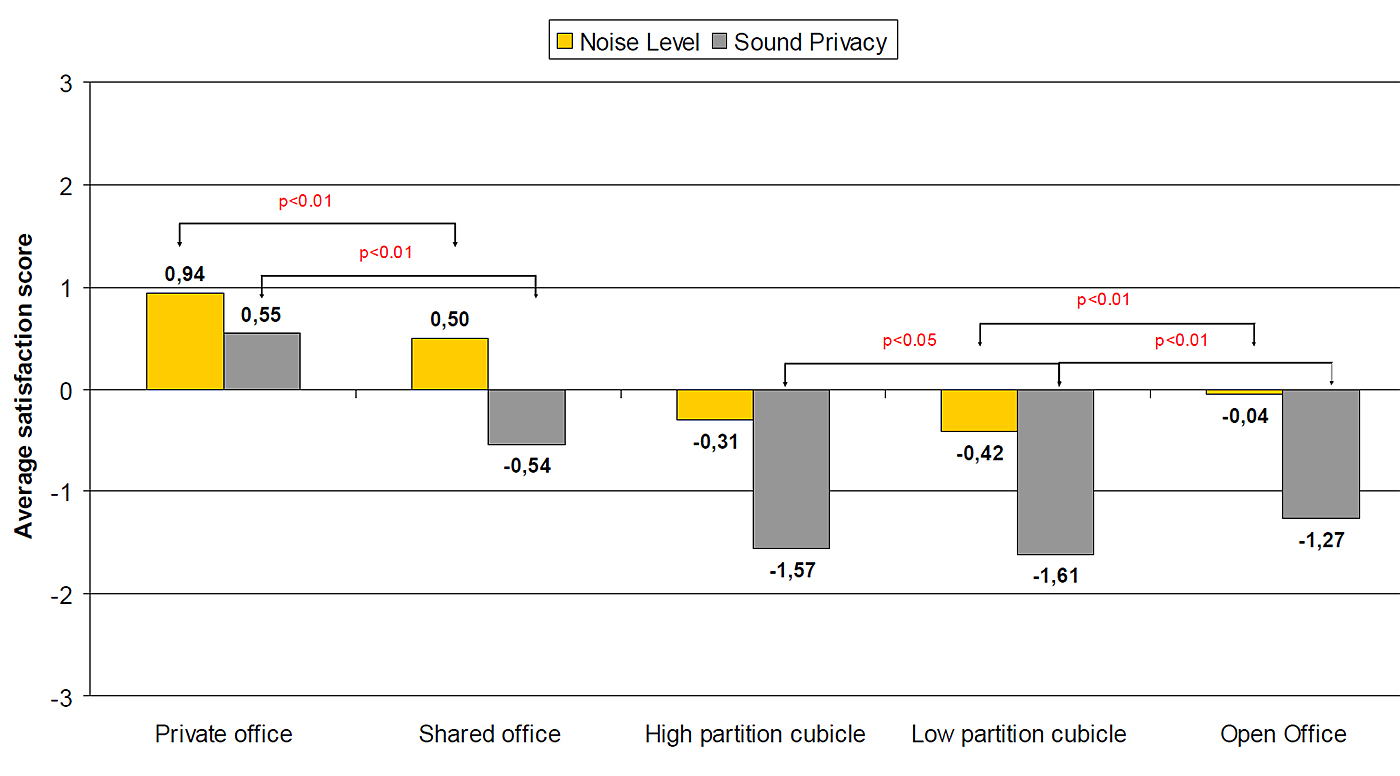CBE mined Occupant IEQ Survey data to investigate occupant satisfaction in a variety of office configurations.
Status: Completed
Funding Sources: CBE Energy Consortium
Project Objective
Determine the effects of acoustic conditions on productivity and workplace satisfaction using occupant responses collected with CBE’s Occupant Indoor Environmental Quality (IEQ) Survey.
Significance to Industry
Acoustics are an important attribute of commercial office building design. Studies have shown that noise is probably the most prevalent annoyance source in offices, and that noise can lead to increased stress for occupants. Speech privacy may be an even more important effect than noise. Yet acoustics in most cases do not receive the level of design attention as thermal, ventilation and other architectural and engineering considerations. The causes and consequences of poor acoustical performance are perhaps not adequately understood by designers and building owners. It would be valuable to determine from a large population of office buildings how occupants perceive their acoustical environments, and what aspects of office building design are influencing these perceptions.
Research Approach
The Center for the Built Environment (CBE) at UC Berkeley maintains an extensive post-occupancy-evaluation (POE) database for commercial buildings. The database contains results from CBE’s web-based occupant IEQ survey, which has been used since 1996 to measure occupant response to buildings, diagnose the cause of problems, evaluate new building technologies, identify trends in performance, and benchmark the quality of individual buildings against the population of similar buildings. At the time of this study, 66 different surveys had been conducted in the USA, covering more than 8000 respondents.
The survey data was divided up into subjective and objective variables. A subjective variable could be an occupant’s satisfaction with the noise level or satisfaction with the sound privacy level. The occupants vote on a 7–point satisfaction scale ranging from –3 to 3. Objective variables are demographic or other background data such as gender and office type. Physical factors relevant to the acoustic analysis such as phones ringing, people talking, noise from HVAC system etc, are also found in the branching drill-down questions that follow dissatisfied votes.
We analyzed acoustic satisfaction in office environments in buildings surveyed by The Center for the Built Environment (CBE). A total of 4096 respondents in 15 buildings were included in this analysis. In CBE’s survey, overall acoustic satisfaction is a function of both the satisfaction with the background noise level and satisfaction with sound privacy. From the database of occupant responses we see that people are significantly more dissatisfied with sound privacy than noise level (P < 0.01). Occupants in private offices are significantly more satisfied with the acoustics than occupants in cubicles (P<0.01). Occupants’ self-rated job performance shows that over 60% of occupants in cubicles think acoustics interfere with their ability to get their job done.
Publications and Reports
Jensen, K., and E. Arens, 2004. Acoustic Quality in Office Workstations, as Assessed by Occupant Surveys. Proceedings, Indoor Air 2005, Sept. 4-9, Beijing, China.

